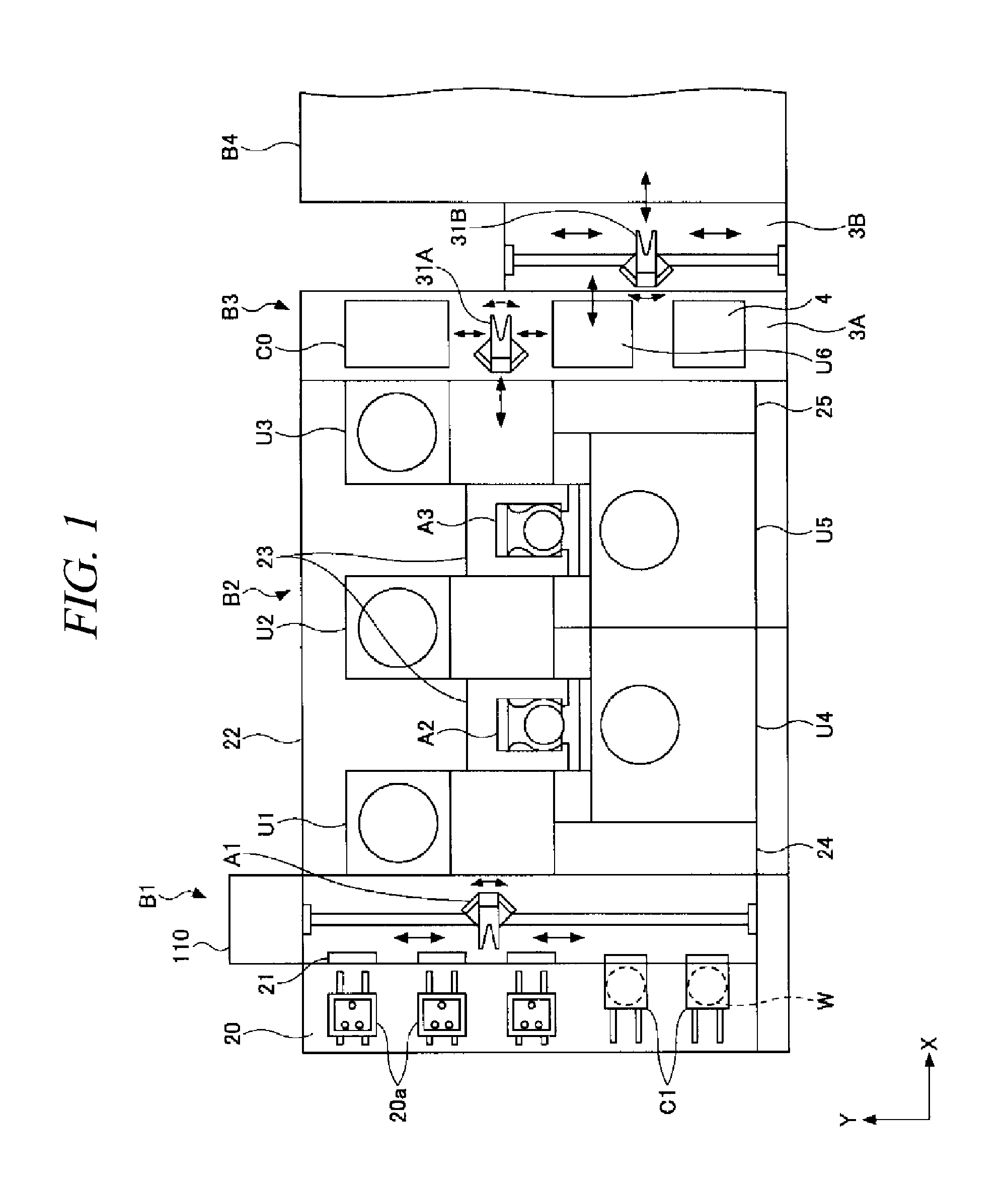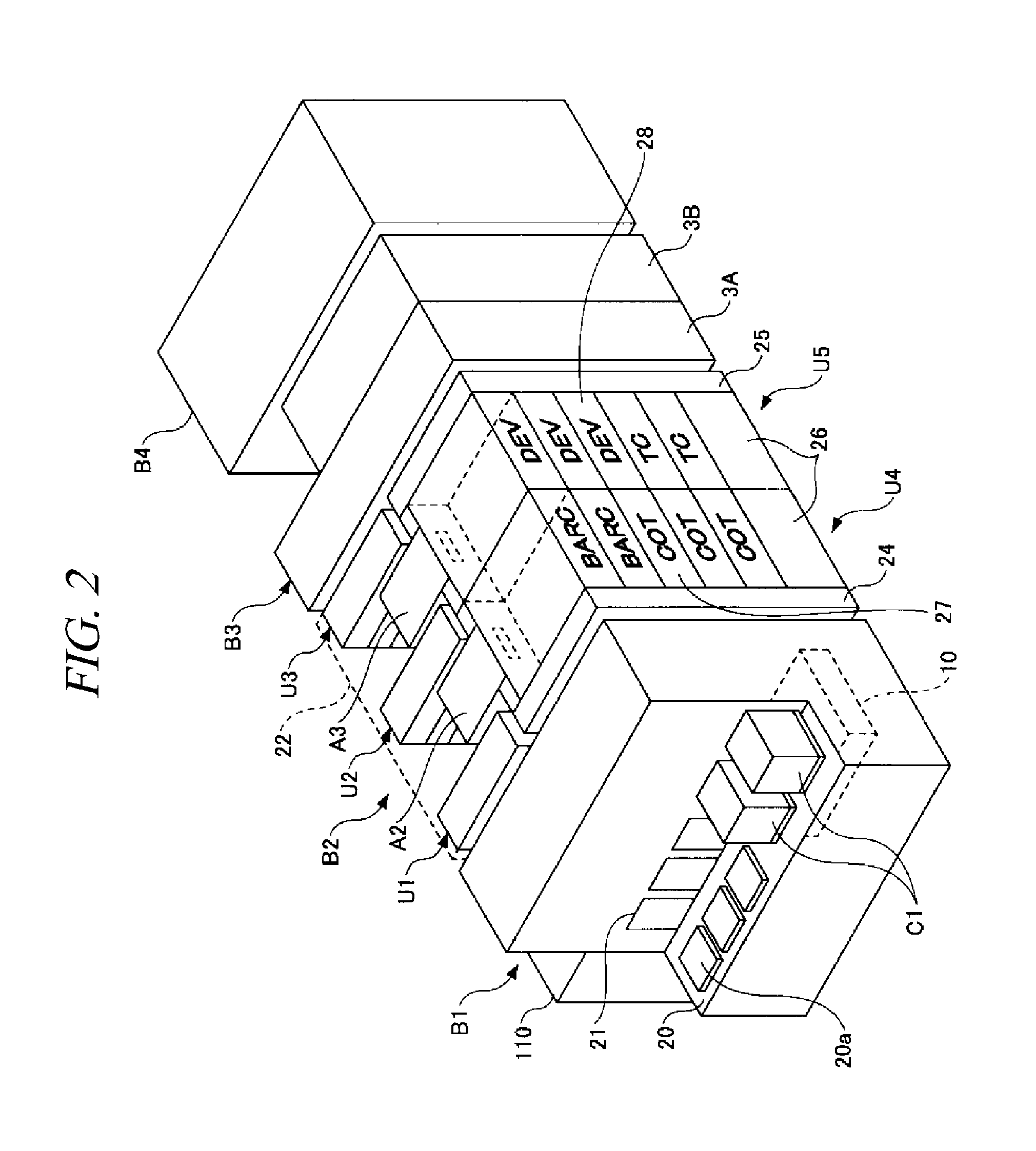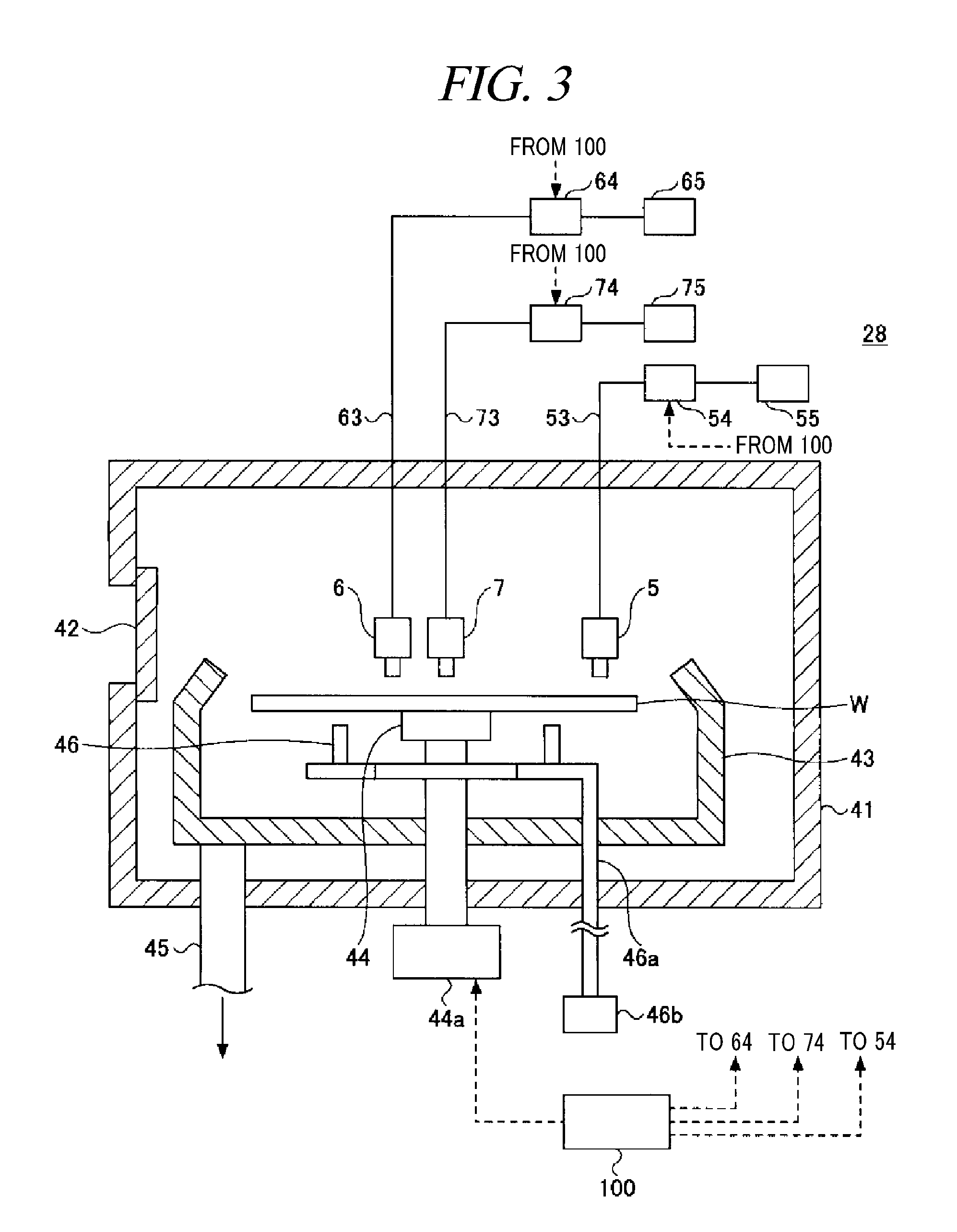Substrate processing method
a processing method and substrate technology, applied in the direction of photomechanical equipment, instruments, cleaning using liquids, etc., can solve the problems of insufficient ultra-miniaturized semiconductor devices, non-uniform line insufficient line width of second resist patterns, so as to reduce non-uniform line widths and reduce productivity
- Summary
- Abstract
- Description
- Claims
- Application Information
AI Technical Summary
Benefits of technology
Problems solved by technology
Method used
Image
Examples
first embodiment
[0049]Above all, a substrate processing method and a substrate processing system employing the substrate processing method in accordance with a first embodiment will be explained with reference to FIGS. 1 to 14.
[0050]Referring to FIGS. 1 and 2, a substrate processing system in accordance with the present embodiment will be explained. In this substrate processing system, a coating / developing apparatus is connected with an exposure apparatus.
[0051]FIG. 1 is a plane view showing a schematic configuration of a substrate processing system in accordance with the present embodiment, and FIG. 2 is a perspective view showing a schematic configuration of the substrate processing system in accordance with the present embodiment.
[0052]The substrate processing system includes a carrier mounting unit B1, a processing unit B2, an interface unit B3, and an exposure unit B4.
[0053]The carrier mounting unit B1 includes a carrier station 20, an opening / closing unit, and a transit mechanism A1. The carr...
first modification example of first embodiment
[0170]Hereinafter, referring to FIGS. 17 and 18, there will be explained a substrate processing method in accordance with a first modification example of the first embodiment.
[0171]A substrate processing method of the present modification example is different from the substrate processing method in accordance with the first embodiment in that a processing time t is determined based on a relationship between the processing time t and line widths CD2-1 and CD2-2 of a second resist pattern P2 on both a central area of a wafer W and a periphery area of the wafer W.
[0172]In this modification example, the substrate processing system, the developing unit, and the line width measurement apparatus explained in the first embodiment may be used.
[0173]FIG. 17 is a flow chart for explaining a sequence of processes of a substrate processing method in accordance with the present modification example. FIG. 18 is a graph schematically showing a relationship between a processing time and a space widt...
second modification example of first embodiment
[0188]Hereinafter, referring to FIGS. 19 to 22, there will be explained a substrate processing method in accordance with a second modification example of the first embodiment.
[0189]The substrate processing method in accordance with the present modification example is different from the substrate processing method of the first embodiment in that first data include a first processing condition under which a cleaning process is performed on the wafer W in the first process and the first data show a relationship between a condition other than a processing time and a line width CD2 of a second resist pattern P2.
[0190]In the present modification example, the substrate processing system, the developing unit, and the line width measurement apparatus explained in the first embodiment may be used.
[0191]FIG. 19 is a flow chart for explaining a sequence of processes of the substrate processing method in accordance with the present modification example.
[0192]As depicted in FIG. 19, the substrate...
PUM
| Property | Measurement | Unit |
|---|---|---|
| wavelength | aaaaa | aaaaa |
| wavelength | aaaaa | aaaaa |
| space width SP1 | aaaaa | aaaaa |
Abstract
Description
Claims
Application Information
 Login to View More
Login to View More - R&D
- Intellectual Property
- Life Sciences
- Materials
- Tech Scout
- Unparalleled Data Quality
- Higher Quality Content
- 60% Fewer Hallucinations
Browse by: Latest US Patents, China's latest patents, Technical Efficacy Thesaurus, Application Domain, Technology Topic, Popular Technical Reports.
© 2025 PatSnap. All rights reserved.Legal|Privacy policy|Modern Slavery Act Transparency Statement|Sitemap|About US| Contact US: help@patsnap.com



